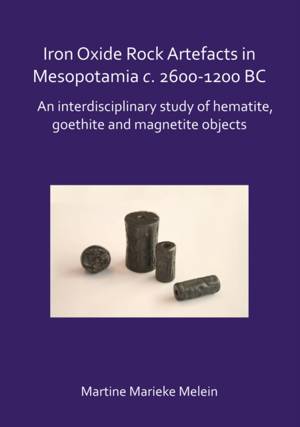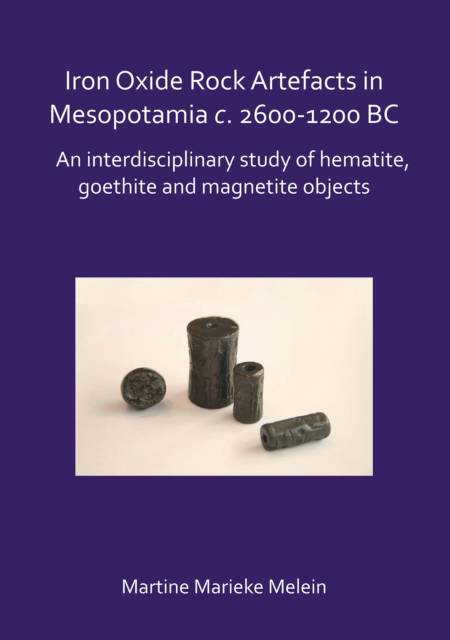
Je cadeautjes zeker op tijd in huis hebben voor de feestdagen? Kom langs in onze winkels en vind het perfecte geschenk!
- Afhalen na 1 uur in een winkel met voorraad
- Gratis thuislevering in België vanaf € 30
- Ruim aanbod met 7 miljoen producten
Je cadeautjes zeker op tijd in huis hebben voor de feestdagen? Kom langs in onze winkels en vind het perfecte geschenk!
- Afhalen na 1 uur in een winkel met voorraad
- Gratis thuislevering in België vanaf € 30
- Ruim aanbod met 7 miljoen producten
Zoeken
Iron Oxide Rock Artefacts in Mesopotamia C. 2600-1200 BC
An Interdisciplinary Study of Hematite, Goethite and Magnetite Objects
Martine Marieke Melein
Paperback | Engels
€ 54,45
+ 108 punten
Omschrijving
The flourishing civilisations of Mesopotamia, nowadays Iraq and Syria, imported all kinds of materials from the surrounding regions. Iron oxide rock (hematite, goethite and magnetite) was very popular for weight stones and cylinder seals around 2000 BC. This research aims to determine the region of origin for the raw material, what made people start using iron oxide rock, and what led them to stop using it. To answer these questions, a multidisciplinary approach was applied. Geology and archaeology were combined to identify Northern Syria as the region of origin. Archaeometric research of the production process showed that technological change concurred with the start and end of the use of iron oxide rock. Cuneiform texts yielded, among other information, the earliest description of magnetism known to mankind. Furthermore, element and mineral composition of 50 artefacts from three Dutch collections were determined with modern, non-destructive analysis techniques.
Specificaties
Betrokkenen
- Auteur(s):
- Uitgeverij:
Inhoud
- Aantal bladzijden:
- 268
- Taal:
- Engels
Eigenschappen
- Productcode (EAN):
- 9781784919641
- Verschijningsdatum:
- 30/09/2018
- Uitvoering:
- Paperback
- Formaat:
- Trade paperback (VS)
- Afmetingen:
- 203 mm x 290 mm
- Gewicht:
- 816 g

Alleen bij Standaard Boekhandel
+ 108 punten op je klantenkaart van Standaard Boekhandel
Beoordelingen
We publiceren alleen reviews die voldoen aan de voorwaarden voor reviews. Bekijk onze voorwaarden voor reviews.









